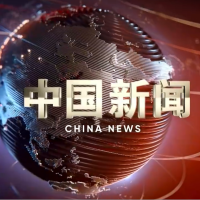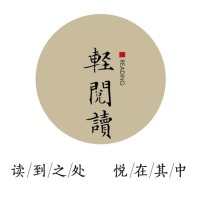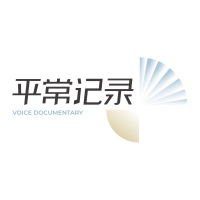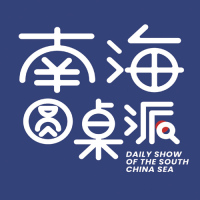



















Seeking Common Ground: China-ASEAN Cooperation Under Reciprocal Tariffs
In recent days, the Reciprocal Tariff Policy launched by the Trump administration has disrupted the global economic order, with China and Southeast Asia becoming the hardest-hit regions. Although ASEAN countries have responded differently from China—based on their own economic realities—in the face of Washington’s tariff threats, there is a shared understanding: “When the nest is overturned, no egg remains intact.” China and ASEAN still share broad consensus and, on the basis of mutual respect and dialogue, can seek common ground while reserving differences and work together to confront the challenges posed by the U.S. tariffs.
It must be acknowledged that ASEAN countries and China have adopted different attitudes and measures in response to the reciprocal tariffs. ASEAN countries are generally showing a distinct preference for “soft diplomacy” in handling the issue.
As this year’s rotating chair of ASEAN, Malaysia has reached a consensus with leaders of several ASEAN countries to adopt a “low-profile engagement” approach through soft diplomacy in response to the reciprocal tariffs, sending a joint delegation to the U.S. to formally begin dialogue. Indonesia, the largest economy in Southeast Asia, has stated it will not retaliate against the U.S., and has instead taken a conciliatory stance by easing non-tariff barriers such as local content requirements to gain leverage in trade talks.
As the fastest-growing economy in Southeast Asia in recent years, Vietnam has made it clear that it will resolve disputes through negotiations rather than take confrontational measures that could escalate tensions, and it has already reached an agreement with the U.S. to remove certain non-tariff barriers. Singapore, despite being one of the most vocal critics of the Trump administration, has insisted it will not take retaliatory action under the terms of its free trade agreement with the U.S. Thailand has also said it will not retaliate, choosing instead to focus on addressing the U.S. concern over trade deficits in hopes of gaining favorable terms in negotiations.
At the virtual Special ASEAN Economic Ministers’ Meeting held on April 10, while serious concerns were raised over the reciprocal tariffs, the ministers also expressed a shared willingness to engage in frank and constructive dialogue with the U.S. to address trade-related issues. They jointly pledged not to take any retaliatory measures in response to the U.S. tariffs.
At the same time, it is important to recognize that China and most ASEAN countries share several common views regarding the reciprocal tariffs.
Firstly, under the weight of the sluggish global economic recovery and growing uncertainty, these tariffs further undermine global trade and economic growth.
Before April 9, Southeast Asia was among the hardest-hit regions under the Reciprocal Tariff Policy, with ASEAN countries facing additional tariffs ranging from 10% to 49% (specifically: 24% for Malaysia and Brunei, 32% for Indonesia, 17% for the Philippines, 10% for Singapore, 49% for Cambodia, 48% for Laos, 46% for Vietnam, 44% for Myanmar, and 36% for Thailand). After April 9, a 90-day grace period was granted to ASEAN countries, during which the reciprocal tariffs were reduced to 10%. However, despite this temporary relief, the tariffs continue to pose significant challenges to regional and global supply chains, and will undoubtedly deal a heavy blow to ASEAN’s foreign trade and economic growth.
Take Vietnam as an example: its key industries such as textiles and garments, footwear, electronics, furniture, and agriculture are likely to be hit first. If exports slow down or investment declines, Vietnam’s economy will inevitably suffer. Citigroup had previously predicted that the implementation of reciprocal tariffs could drag Vietnam’s GDP growth from 6–7% down to around 5%. In fact, as the threat of tariffs loomed, many businesses began postponing investment plans in Vietnam, making an economic slowdown this year almost certain. In this regard, the recently concluded ASEAN Economic Ministers’ Meeting also noted that these unprecedented U.S. tariffs risk disrupting regional and global trade, investment flows, and supply chains, affecting businesses and consumers around the world.
Secondly, the reciprocal tariffs undermine the rules-based global economic and trade system and order.
On April 9, Chinese Minister of Commerce Wang Wentao held a video call with Malaysia’s Minister of International Trade and Industry, Tengku Zafrul, whose country currently chairs ASEAN. The two sides exchanged views on jointly responding to the U.S. tariff policy. During the call, Zafrul stated that Malaysia also believes the U.S. policies violate the principles of free and fair trade as outlined by the World Trade Organization, and expressed Malaysia’s willingness to jointly uphold multilateralism and promote global trade development.
Singapore’s strong criticism of the U.S. largely stems from the same concern. As Prime Minister Lawrence Wong stated in his parliamentary address on April 8, the U.S. imposition of reciprocal tariffs fundamentally undermines the rules-based international trade system and order. He further pointed out that the most-favored nation principle under the WTO is a cornerstone of the multilateral trading system, and the U.S. tariffs run counter to this principle, opening the door to selectively forming trade relations based on unilateral preferences.
Thirdly, the reciprocal tariffs reflect the Trump administration’s economic hegemony and trade coercion against other countries.
This is another key reason why Singapore has strongly criticized the U.S. It is well known that Singapore and the U.S. have a free trade agreement in place. Moreover, the trade structure between the two countries shows that Singapore actually imports more goods from the U.S. than it exports. Yet despite this, Singapore has still been hit with a 10% reciprocal tariff.
Against this backdrop, Prime Minister Lawrence Wong spoke with notable candor and expressed clear dissatisfaction. He said that if the U.S. tariffs were truly reciprocal, then Singapore should not be subject to any tariffs at all. He added, “We are deeply disappointed—especially given the strong and enduring friendship between our two countries. This is not how friends should be treated.”
Fourthly, enhancing regional cooperation, expanding market access, and strengthening global partnerships are key strategies for responding to the reciprocal tariffs.
China and ASEAN countries share a common view regarding the U.S. market: while it is important, it is by no means the only option. Developing regional markets and broadening global economic partnerships have become vital paths to diversifying trade partners and increasing the resilience of the region’s external economic relations.
At the same time, the substantial conclusion of the China-ASEAN Free Trade Area Version 3.0 upgrade negotiations in 2024, along with the full implementation of the Regional Comprehensive Economic Partnership (RCEP) since 2022, are emerging as major drivers of regional trade and economic growth. The resilience of regional and global multilateral systems will also serve as a crucial foundation for China, ASEAN, and other partners to jointly shape a new global framework.
This year marks the 70th anniversary of the Bandung Conference, a landmark international gathering that gave rise to the “Bandung Spirit” — centered on the principle of “seeking common ground while shelving differences.” This spirit has since served as a guiding norm in the development of relations among developing countries. In the face of rising U.S. tariff hegemony, China and ASEAN—both key representatives of emerging global economies—must all the more uphold this spirit, working together to tackle the challenges posed by reciprocal tariffs. This moment presents a historic opportunity to once again embody the Bandung Spirit, 70 years on.
(Author: Ge Hongliang, Deputy Dean of the College of ASEAN Studies at Guangxi Minzu University and Distinguished Researcher at the CMG’s Expert Committee on South China Sea Studies)



















